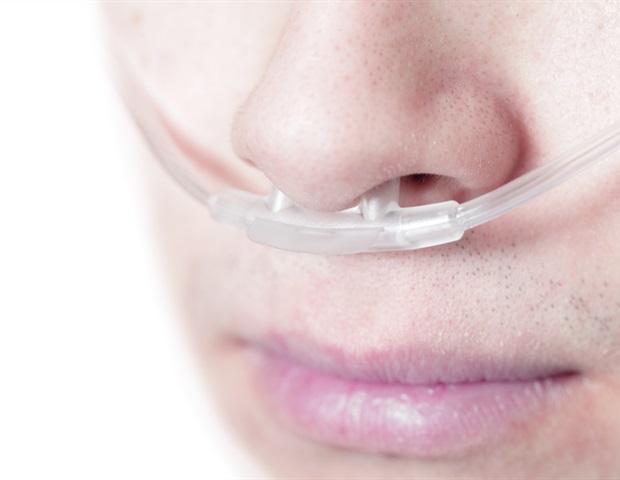Regular walking has been shown to reduce the risk of type 2 diabetes (T2D); however, little is known about the precise walking speed associated with this reduced risk. Addressing this gap in research, a recent British Journal of Sports Medicine study investigates the association between the risk of T2D and walking speed.
 Study: Walking speed and the risk of type 2 diabetes: a systematic review and meta-analysis. Image Credit: PeopleImages.com – Yuri A / Shutterstock.com
Study: Walking speed and the risk of type 2 diabetes: a systematic review and meta-analysis. Image Credit: PeopleImages.com – Yuri A / Shutterstock.com
Background
Globally, T2D has been recognized as one of the most common metabolic disorders. The number of adults with T2D worldwide is expected to rise to 783 million by 2045 from current estimates of 537 million.
Structured exercise programs and physical activity are essential to diabetes prevention. Prior research has documented a reduction of T2D risk by 35% among physically active individuals.
Interestingly, frequent walking was linked to a 15% lower risk of T2D. Walking is an inexpensive and simple physical activity that provides numerous mental, social, and health benefits.
Walking speed is a reliable metric of overall health and a crucial indicator of functional capacity. Compared to slow walking, faster walking may have greater health benefits, as documented by several studies; however, there is no consensus on which walking speed provides the lowest risk of T2D.
About the study
The present study is a systematic review and meta-analysis that used data from different sources, including Scopus, PubMed, CENTRAL, and Web of Science, until May 30, 2023. To calculate relative risk (RR) and risk difference (RD), random-effects meta-analyses were used.
The Grading of Recommendations Assessment, Development, and Evaluation (GRADE) and Instrument to assess the Credibility of Effect Modification ANalyses (ICEMAN) tools were used to rate the certainty and credibility of evidence and sub-group differences.
Key findings
Average and fairly brisk walking correlated with a moderately lower risk of T2D. There was only moderate evidence that brisk walking correlated with a 39% lower risk of T2D, equal to 2.24 fewer cases for every 100 individuals. Moreover, the risk of T2D decreased by 9% for every one km/hour increase in walking speed.
What could be the underlying mechanism behind this association? Walking speed indicates functional capacity. Additionally, individuals who are able to walk briskly potentially engage more in daily physical activities, which is another factor that reduces the risk of T2D. These individuals are also more likely to have greater cardiorespiratory fitness. Other mechanisms could be related to greater muscle strength, increased physiological function stimulus, lower body weight, and waist circumference.
The evidence provided in a recent study based on the United Kingdom Biobank suggests that walking pace is as important as walking duration to reduce T2D risk. Current public health guidelines for T2D patients do not include any instructions on gait speed. The existing evidence argues for incorporating such recommendations in public health guidance.
It remains unclear whether the speed of walking is a causal factor for health status. Future research should explore this question, and if proven, there is a solid case to devise strategies to encourage people to walk briskly, subject to their physical capabilities. Current evidence suggests an association between faster walking speeds of up to eight km/hour and an exponential reduction in the risk of T2D.
A dose-response analysis showed that the risk of T2D was not altered significantly until a walking speed of four km/hour was reached. The risk then declined linearly between four and eight km/hour, thus indicating that four km/hour is likely the minimum pace to reduce T2D risk, equivalent to 100 steps/min for women and 87 steps/min for men.
Conclusions
Fairly brisk and brisk/striding walking lowers the risk of T2D in adults. While increasing walking duration is beneficial, it is advisable to encourage people to walk at brisk speeds.
The current study exploited the temporal sequence of outcome and exposure, which are relatively less affected by selection and recall biases. Another strength of this study is the large number of sub-group analyses to ensure the completeness and robustness of the findings.
One limitation of the analysis was that many underlying studies had profound differences among sub-groups, making it difficult to compare their findings. There could also have been some reverse causality, as individuals with faster walking speeds may be physically fitter and have overall better health status.
Future studies are needed to determine the impact of potential confounding factors.
Journal reference:
- Jayedi, A., Zargar, M., Emadi, A., & Aune, D. (2023) Walking speed and the risk of type 2 diabetes: a systematic review and meta-analysis. British Journal of Sports Medicine. doi:10.1136/bjsports-2023-107336








